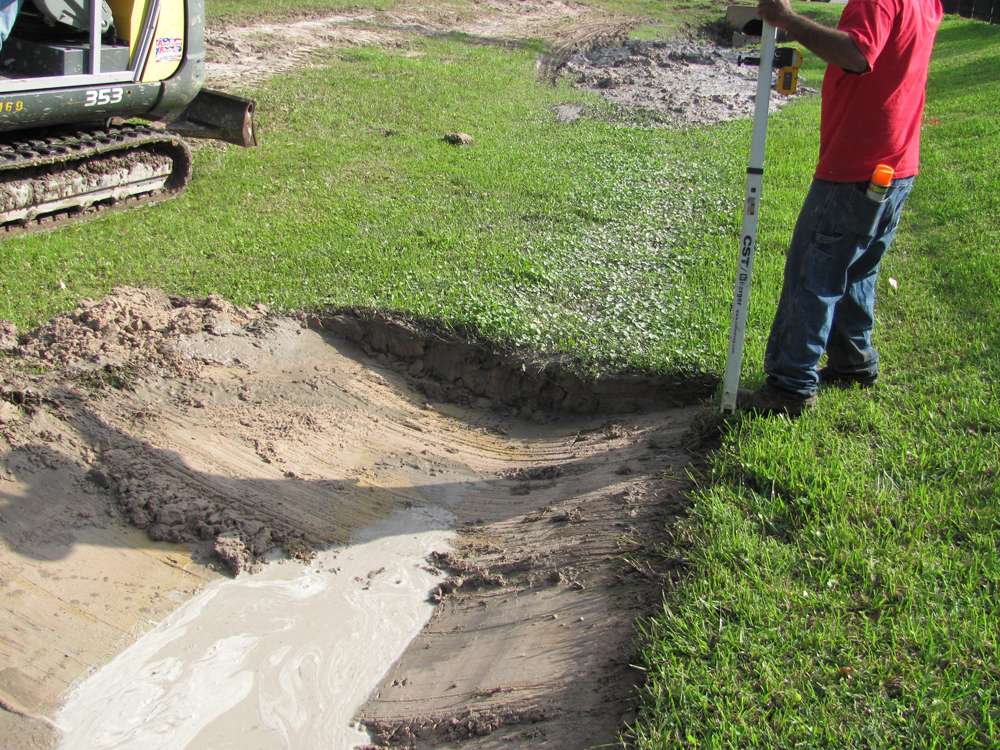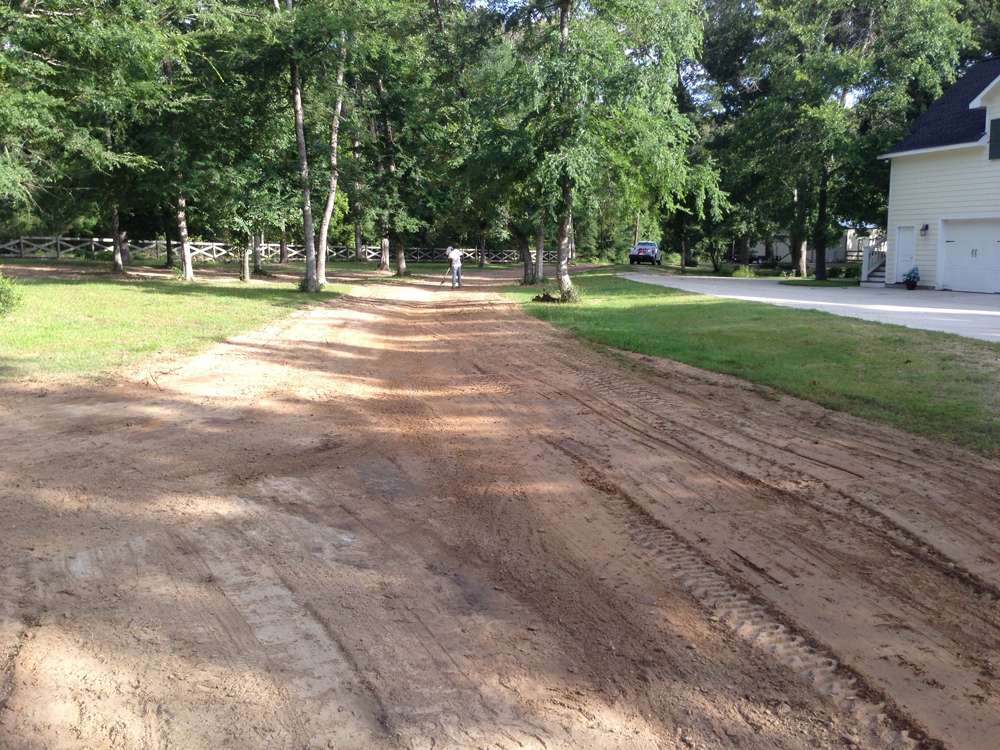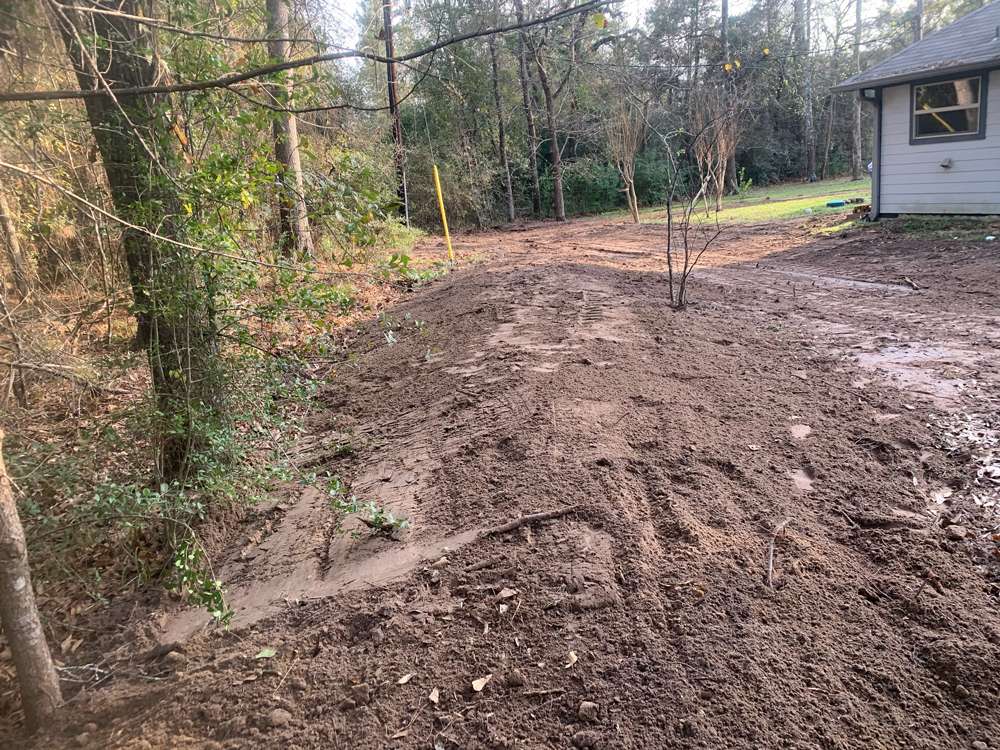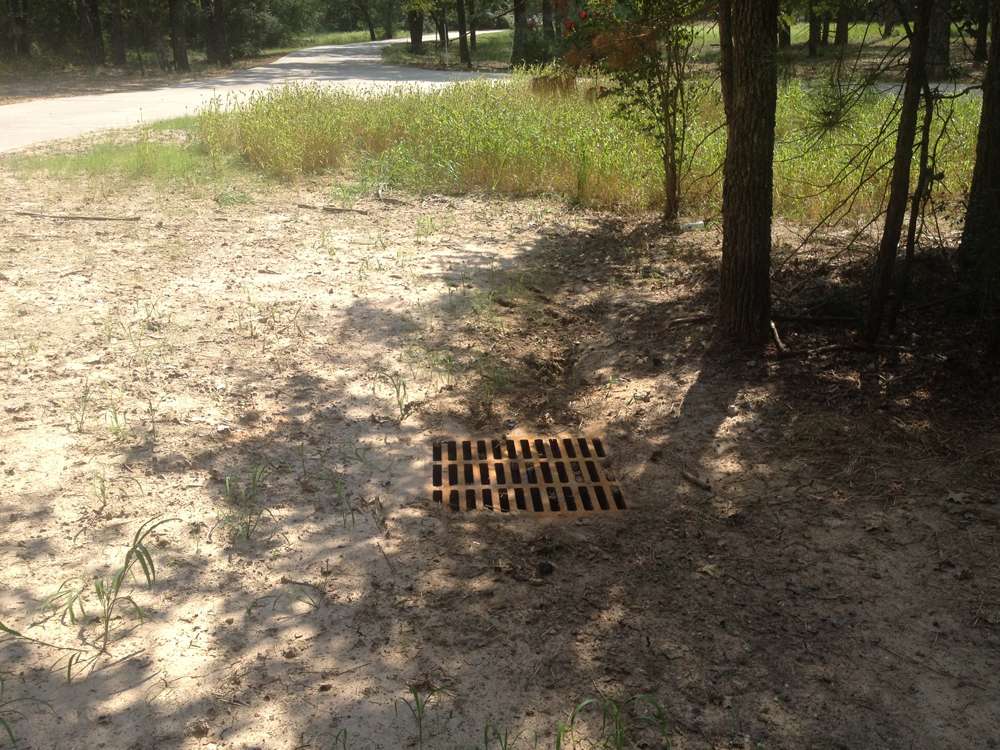Drainage
- Home
- Drainage
Most people have no idea how important drainage really is. Construction or property improvements often impact the flow of water on the property. It’s important to work with the water flow, not against it. There are generally two methods to drain water: redirect water on top of the ground (surface, or slope, using a swale or a berm) or underground (or in-ground) in a effective drainage system.
How much does it cost? To receive your free estimate, click Estimate My Job button:
Ditch Regrading

Proper drainage is essential. Overtime ditch walls erode and build up silt pockets which prevent water from flowing. This could occur from rain or sometimes from construction of a nearby site.
Regrading ditches is usually to prevent flooding. We flatten out the steeper angles so water flows easily.
read more
Other reasons for regrading include:
- enabling construction on lands that were previously too varied and/or steeply slope
- enabling transportation along routes that were previously too varied or steep
- changing drainage patterns therefore rerouting surface flow
- improving the stability of terrain adjacent to developments
Potential problems and consequences from regrading include:
- oil and/or slope instability
- terrain prone to erosion
- ecological impacts, habitat destruction, terrestrial and/or aquatic biological losses
- drainage problems (surface and/or subsurface flow) for areas not considered in the regrading plan
- loss of aesthetic natural landscape topography and/or historical cultural landscapes
Regrading ditches is something that we have been doing for very many years. We shoot the elevation at the start of the ditch and shoot the elevation at the end of the ditch. Then we remove (regrade) the dirt and silt blocks the flow of water. Daniel Dean considers the environment impact when he evaluates a ditch for regrading.
Redirecting Water (Burms, Swales, Levees)

Standing Water
Standing water on your property causes a muddy mess. It destroys a healthy lawn, can become a incubator for mosquitoes and many kinds of bacteria and parasites. It also prevents you from mowing your grass and creates a whole new set of problems when your dog runs through it. Don’t let your yard become a part-time swamp. Daniel Dean has solutions for standing water.

Keeping Water Away from Your House
Over time, houses sink. This is called settling. Keeping water away from your house can become an expensive problem. This problem is often compounded by the owner placing dirt and landscaping material around houses for flowers and foliage, which elevates the land next to the house to become higher than the foundation. This causes water to flow against the house, instead of flowing away from my house.
read more
Water that sits next to a foundation will expand and contract the dirt, and over time the dirt beneath your house will start moving and shifting. This is a major cause for foundation failures. Water should flow away from foundations. Creating swells to catch the water, and berms that prevent water from approaching the house is a Daniel Dean specialty.

Swales
A swale is a shallow channel with gently sloping sides designed to manage water runoff, filter pollutants, and increase rainwater infiltration. Daniel Dean creates swales by lowering the elevations of your property and laser grading it so the water can flow to other areas. This is ideal to fix issues with standing water on your property.

Berms
A berm is a raised area that pushes, or re-directs, water to other areas. Typically, they are several times longer than high, and should gradually taper or slope into the level land. Depending upon the situation, Daniel Dean may only create a swale. Other times only a berm is needed. Then other circumstances require a combination of the two.

Levee 360
A complete levee around a house is needed when water completely surrounds a house on all sides and comes into house. When this happens, there are two options:
read more
- Lift the house
- Build a complete levee that surrounds the house. But, to do this, the grading around the house in the interior of the levee must be accurate so the water will flow to a pump system and remove the dirt from within the containment area.
When water comes into a house on just one or two sides of the house, Daniel Dean can create a swale or berm, or combo of both, to stop water from going into a house.
How much does it cost? To receive your free estimate, click Estimate My Job button:
Culverts (Driveway, Road, Creek Crossing)

A culvert is a pipe that goes under an area that you were wanting to access to allow water to flow as needed. Install a culvert to go across the bottom of a ditch, gully or creek to allow water to flow through the ditch, allowing you access to your property using a driveway or road.
read more
Culverts may be made of reinforced concrete, galvanized steel or metal corrugated, aluminum, and plastic (such as high density polyethylene, HDPE). Daniel Dean installs a culvert with stabilized sand (sand mixed with cement) or without. If the ditch holds water often or is soft, it is a good idea to use stabilized sand. When stabilized sand dries it becomes almost as hard as concrete.
Poorly designed culverts can become jammed with sediment and debris during heavy rain. If the culvert cannot pass the water volume in the stream, the water will find the path of least resistance, such as into your yard or over the road embankment causing erosion. The embankment material that is washed away can clog other structures downstream, causing them to fail as well. A properly sized culvert can help to alleviate these problems.
Inlets and Underground Pipe

An inlet is where water flows into a pipe or into a box that transports the water through the drainage system to its outfall. In an underground drainage system, which often consists of a series of pipes with inlet boxes, ultimately releases the runoff water at the outfall point.
The beginning of the drain system typically has a smaller pipe, and then will increase in diameter as it flows downhill and collects more water. This is to reduce the water pressure at the outlet.
Jetting
When dirt and sediment fill into a pipe or underground drainage system the only way to get it out is to jet it out.
Jetting involves using a high-pressure hose with a specialized nozzle connected to a machine that pressurizes water. High-pressure water jetting effectively breaks up the debris that may have accumulated in the pipe and flushes it out.
